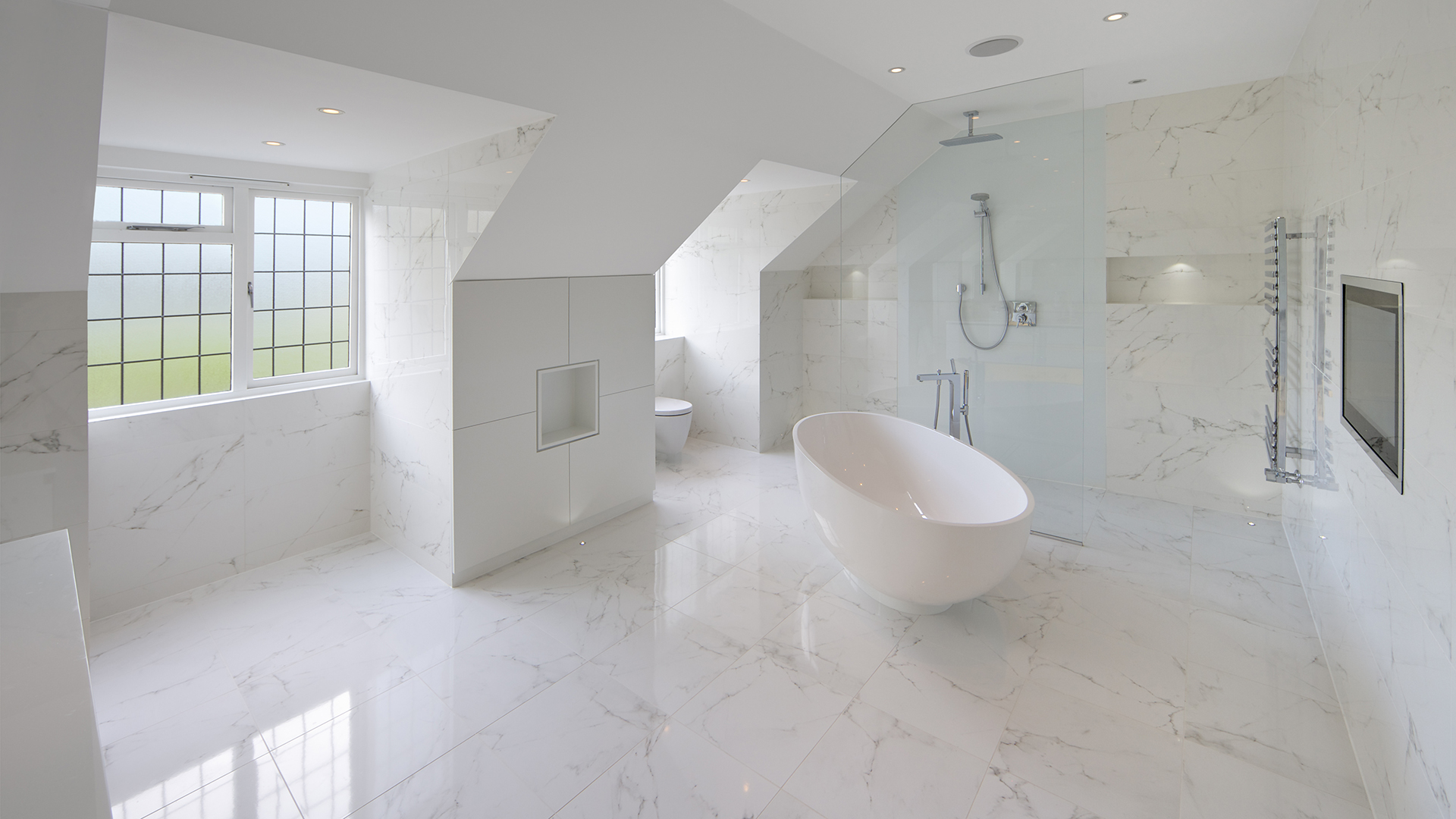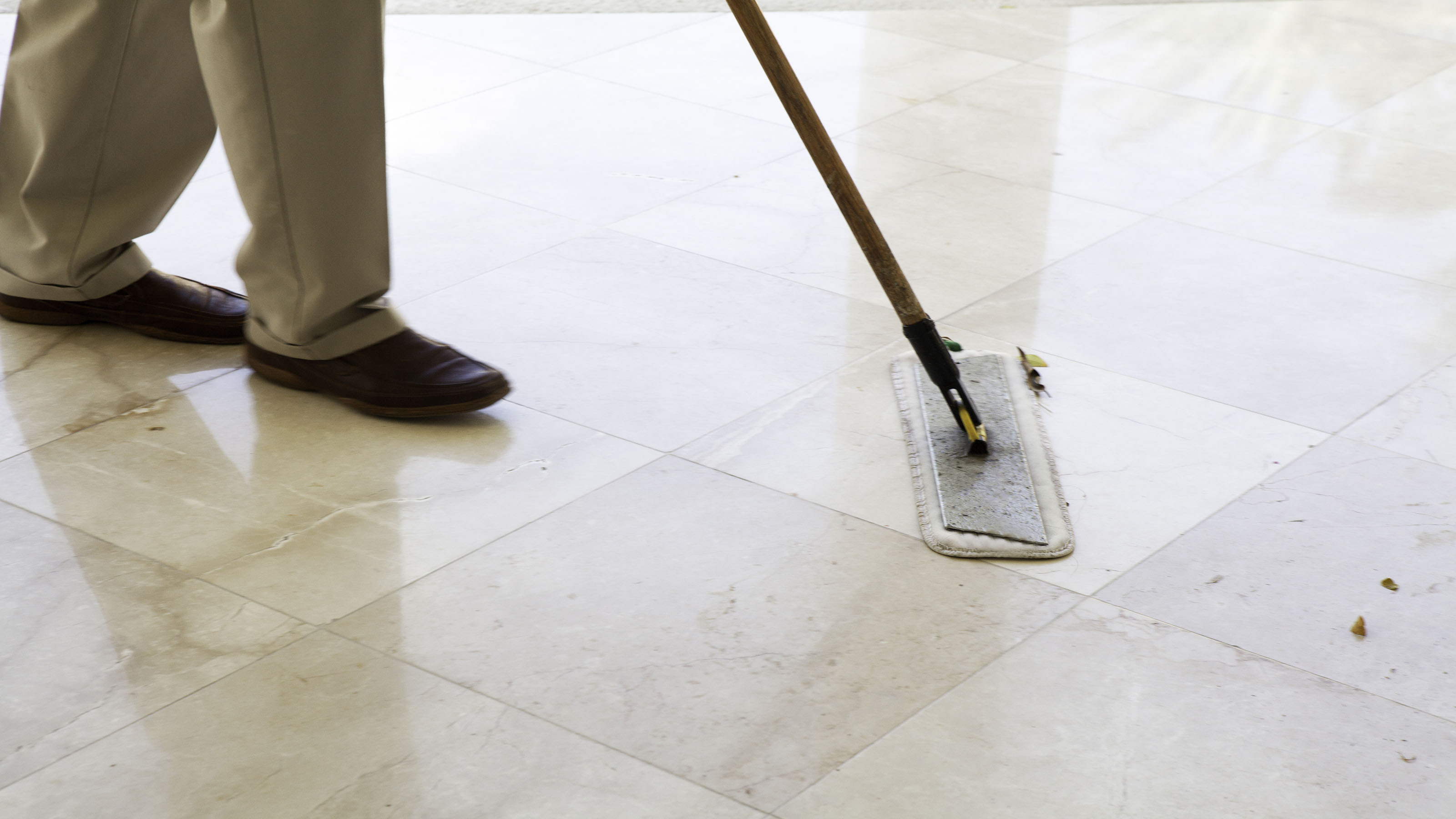The marble flooring of your dreams is finally installed, and your home interior looks polished and right on-trend. The challenge now is figuring out how to clean marble floors the right way.
Keeping walkways clean is tricky at the best of times, especially in high-traffic areas such as corridors or open-plan kitchens. This is made increasingly difficult when you are dealing with a delicate, porous material like marble.
Sadly, it is susceptible to stains, however this shouldn’t deter you from choosing this stylish surface. As marble needs regular upkeep to prevent the build-up of dust, this isn’t ideal for those with busy schedules. Exploring the best steam mops will inspire you to find efficient solutions for everyday cleans, so your flooring remains spotless.
Only certain cleaning agents should be used with marble, and it is best to steer clear of anything acidic or abrasive. To help you streamline your cleaning process, and get your floors shining, we have put together a few handy tips that will help you keep on top of daily chores and tricky stains.
How often you should clean marble floors
Dust is the enemy of marble, and no matter how busy your home is, this can accumulate quickly. When this builds up, it can create small scratches that will dull the shine and allow liquids to penetrate the surface. This will harm any marble floor for good, so it is vital to sweep and use a microfiber cloth to lightly dust. We also recommend removing shoes before walking on marble, so that no mud or grime is traipsed through the room.
To stay on top of this, you should lightly clean multiple times a week, or more if you have pets who shed hairs. Soft, non-abrasive cloths will be best for this - try to avoid using the best vacuum cleaners as the attachments come with a risk of further scratching the fragile surface.

What you should use to clean marble floors
John Krause, Managing Director of Diespeker & Co, notes, "Brushing is better than using a vacuum cleaner, even one with a setting for hard floors. You also shouldn't use wax-based or oil-based polishes as these may cause the surface to become slippery and the marble to look drab."
Often, your floors will need a deeper clean than simply dusting and sweeping. This will help to remove any built-in dirt, as well as spills that occur in cooking and living areas. However, just because the grime is more stubborn, this doesn’t mean you should jump to using chemicals or complex methods.
Simple is certainly best - so read on for our easy-to-follow guide on how to care for this sensitive stone floor.
- First, sweep or dry mop the floor to remove debris.
- Mix a cleaning solution of 2 parts warm water to 1 part mild, pH-neutral detergent.
- Fill a second bucket with warm water. This will be used for rinsing the cleaning solution.
- Dip a microfiber cloth in the soapy water and softly clean areas, working in circular motions.
- As you clean sections, use a mop and the warm water to rinse the soap. This is important to ensure there is no residue left behind.
- Leave to dry.
How to clean stains on marble floors
In an ideal world, the stress of removing stains from marble would be a distant memory, not an unfortunate reality. One way to combat this is to opt for prevention. Now, this isn’t to say accidents themselves can be stopped, as many mishaps cannot be foreseen. However, the right preparation can make dinner party wine spills and pet accidents easier to manage.
Opting for a marble sealant is one way to lessen the impact of stains. They can’t make a surface stain-proof, but they do make it stain-resistant - giving you a buffer for fetching cleaning supplies.
John Krause, Managing Director of Diespeker & Co, confirms "When the floor has been sealed it can be stain-resistant for between one to eight hours after contact. But it is always better to remove stains immediately. Try blotting first, then use a damp cloth and neutral cleaner before drying the area with a clean cloth."
It is also wise to invest in felt pads for the bottom of furniture, for example chair legs that often move across the floor. This will help to prevent scratching, as well as any indents caused by the prolonged positioning of heavy items. Invest in some door mats to place at entrances too, so that any mud or rainwater can be kept contained.
However, when spills do occur, you can follow these instructions to make a marble poultice which will give your floor the best chance of looking brand new again.
- Use a damp microfiber cloth to mop up any standing liquid. Always blot, instead of wiping.
- Combine a solvent (6% hydrogen peroxide or mineral spirits) with water or baking soda. The poultice should be the texture of peanut butter.
- Apply the mixture to the stain, at around ¼ inch thick.
- Cover with plastic wrap with masking tape around the edges.
- Leave for 24-48 hours.
- Remove the poultice from the surface using a wooden spoon or spatula. Wipe the surface down with a damp cloth and dry it.
Discover more guides for the home…
Best top load washers
Best dishwashers
Best dryers
Best steam mops
Best robot vacuums

